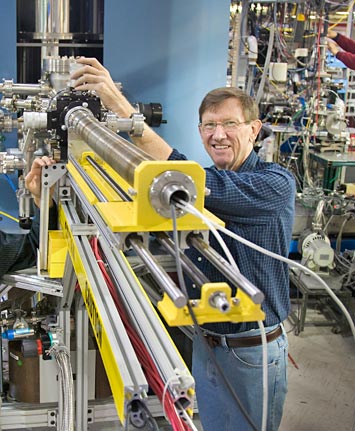User Profiles at NSLS: Raymond Browning, R. Browning Consultants
April 25, 2014
This is the first of a series of profiles on users at the National Synchrotron Light Source (NSLS). First operated in 1982, NSLS has accommodated more than 18,400 unique users in its lifetime as a Department of Energy user facility (see NSLS user stats). After 32 years of distinguished operations, NSLS will shut down on September 30, 2014. Replacing it is NSLS-II, which has been under construction since 2009 and is on track for early completion. When fully built out, NSLS-II will accommodate 60-70 beamlines and host over 4,000 users every year.
Why do you use NSLS?
I answered a Request For Proposals from NIST [National Institute of Standards and Technology] for an electron microscope about seven years ago. I had a concept and some theoretical demonstrations, but in order to make the microscope a reality, I had to come here to make it. One of the great things I found at Brookhaven was the willingness to look at really quite new things. I just had a theory, a piece of paper, but I was given the facilities to build the microscope here and also the run of beamline U4A at NSLS to actually run and test it. I was very lucky to come at the end of the life of NSLS. The fact that NSLS was closing down meant that there wasn’t so much pressure on the beamline usage so it gave me more time. That was very valuable.
What will you do when NSLS shuts down?
The microscope project is ongoing. The next stage is developing one that can be commercialized. What I’m doing at the moment is trying to find materials systems where I can demonstrate how the microscope works, even though it’s a prototype. But I’m getting some very good results.
Do you plan to use NSLS-II? Why?
I will be going to NSLS-II, because for microscopy you want high photon flux. In order to make a higher resolution microscope you need a stronger light, and NSLS-II will be that much stronger light. It should be able to make a factor of 10 to 100 times smaller resolution, so it’s very important. I found all the technicians and everyone I’ve worked with to be extremely helpful. I couldn’t have done it without them, in fact. My work will continue at the NIST beamlines SST-1 and SST-2.
2014-4843 | INT/EXT | Newsroom










